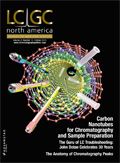Market Profile: Automated DNA sequencers
Automating the DNA sequence process is made possible by the use of fluorescent tags. With fluorescent dyes, the entire experiment can be performed in a single solution instead of four different ones.
Automating the DNA sequence process is made possible by the use of fluorescent tags. With fluorescent dyes, the entire experiment can be performed in a single solution instead of four different ones. Using Sanger-based methods, the DNA fragments migrate through the gel, and the color associated with each successive peak is detected using a laser. The DNA sequence is read by determining the sequence of colors in the peaks as they pass the detector, and then feeding the data directly to a computer for instant results.
Capillary electrophoresis (CE)-based DNA sequencing systems consist of a number of different measurements, all of which use an open fused-silica capillary tube filled with an electrolyte. The ends are immersed in reservoirs, held at high opposing potentials (+/-). Ions in the solution migrate to the oppositely charged ends. Silanol (-Si-OH) groups on the surface of the silica capillary give up hydrogen ions in alkaline media and produce a highly negatively charged surface, which in turn causes the carrier solution in the capillary to move toward the negative electrode. Thus, there is a constant flow of solution, produced by this electroosmotic phenomenon, in the negative direction. The effect of all this is to produce a separation in which, as a result of both the electrophoretic effect and the electroosmotic flow, all anions move toward the cathode, but at different rates. An in-line detector can read all DNA fragments as they go by.

2011 sequencer demand by industry.
Next-generation sequencers have been the latest breakthrough in the automated DNA sequencing market. With only a handful of vendors involved in next-generation sequencing, sequence-by-synthesis and sequence-by-ligation have emerged as the leading technologies. Roche's Genome Sequencer FLX system uses a combination emulsion PCR (emPCR) and sequence by synthesis via pyrosequencing. Similar to Roche, Illumina's Genome Analyzer sequencer uses a sequencing-by-synthesis strategy. However, instead of emulsion PCR, the Genome Analyzer II uses a cluster amplification process. Applied Biosystems/Life Technologies' SOLiD system uses emulsion PCR and microbeads that are transferred onto an open glass slide. The system uses a sequence by ligation strategy, using a two-base encoding chemistry.
SDi estimates that the top five industries account for about 93% of the market share. Academia accounts for over half, followed by government with 21%. CROs, biotechnology, and pharmaceuticals combine for another 21%.
The foregoing data were extracted and adapted from SDi's Global Assessment Report, Edition 12. For more information, visit www.strategic-directions.com

Top Execs from Agilent, Waters, and Bruker Take the Stage at J.P. Morgan Healthcare Conference
January 16th 2025The 43rd Annual Healthcare J.P. Morgan Healthcare Conference kicked off in San Francisco earlier this week. Here’s what top executives from Agilent, Bruker, and Waters, discussed during the event.








